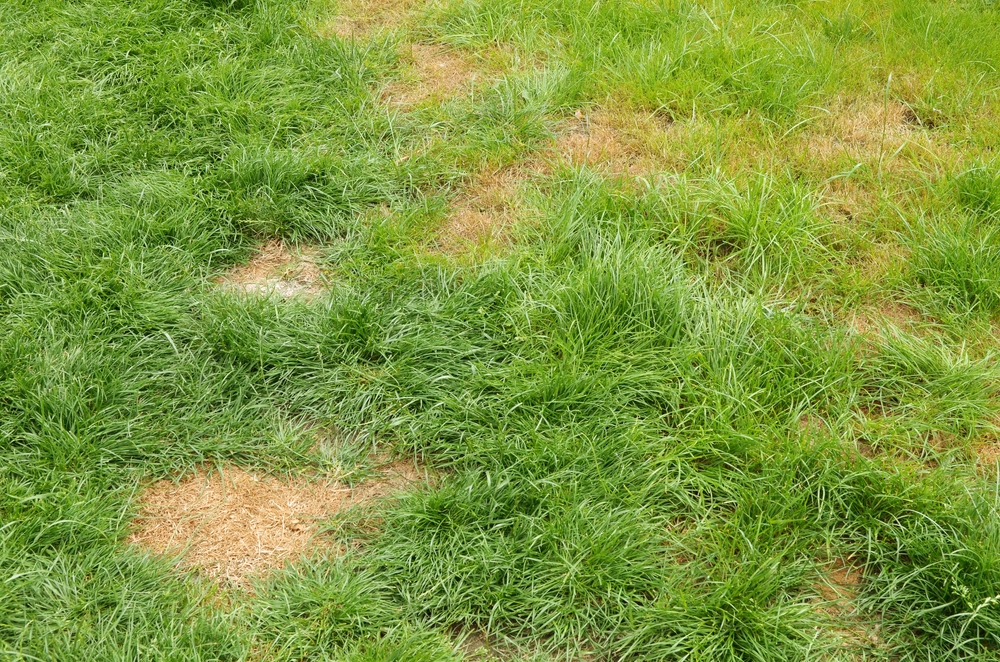Professional Help For Lawn Diseases In Iowa
Most lawn issues are visible, but the cause and solution are not always obvious. Some lawn diseases may not be noticeable to most people until they are very advanced and difficult to fix. Knowing how to identify the most common lawn issue in Iowa lets you call for professional lawn care help early on.
Learn how a lawn care program in Sioux City protects your lawn.
Common Lawn Diseases In Iowa
There are many things that affect Iowa lawns. It’s important to know the cause of your lawn issues so you can find the right solution.
Brown Patch
Brown patch is a fungus that kills grass in a circular pattern that can be very small or up to a few feet in diameter. It’s most common in the Midwest during summer, when temperatures and humidity are high. If you notice brown patch, it helps to mow your lawn at least every 5 days and to water 2-4 inches deep, but only when the grass is wilting. Use a brown patch resistant grass or grass blend to lower the chances of getting this disease.

Red Thread and Pink Patch
If you notice a reddish or pinkish on the tips of your grass, especially in the early morning dew, it could be either red thread or pink patch. These are two different lawn diseases caused by two different fungi, but they look very similar and are both most common when it’s cool and wet outside, which is usually in the spring or early fall in the Midwest. Untreated, the red or pink color moves down the whole blade of grass. Red thread and pink patch can be treated by mowing your lawn once a week and watering deeply once a week early in the morning so the grass is dry by the time high humidity sets in.
Leaf Spot (Melting Out)
Leaf spot is incredibly damaging for lawns and it spreads easily through fungal spores. The disease infects the blades and stems of grass. Leaf spot occurs for many reasons including mowing too much after the grass had gotten too tall, using a dull mower blade, or allowing too much thatch to accumulate. Some strains of grass are more susceptible to leaf spot than others. If you have leaf spot, you should mow lawn deeply one to two times a week and now at least once a week.
Summer Patch/ Necrotic Ring Spot
Ring-type lawn diseases are caused by fungi that target grasses in cool, wet seasons but show on your lawn in spring through early fall. Circular areas of grass wilt and turn dark blue-green before drying out and dying. If not watered immediately upon wilting, grass will die quickly. The best defense against summer patch and necrotic ring spot is a professional lawn program that includes fertilization and aeration.
Dollar Spot
Circular patches of dead grass that are tan or strawberry-colored are a sign of dollar spot. These spots grow until they meet with adjacent spots and take over your lawn. Dollar spot is caused by a fungus and it affects grass that has been dried out by drought, excessively, or has thatch buildup. Proper irrigation techniques, regular mowing, aeration, fertilization, and consistent thatch removal are essential to prevent dollar spot.
Fairy Ring
In early spring and fall, dark green circular patterns on your lawn that range from a few feet to several yards in diameter could indicate the presence of fairy ring. This disease is caused by many types of fungi that form a hard layer on the turf as they decompose thatch. Fairy ring does not respond to fungicide but fertilization and aeration will enhance the green color of your grass and allow for healthy turf growth, making the rings less noticeable.
Snow Mold
Excessive moisture and melting snow in cold weather from late fall to early spring often results in snow mold, which leaves grass matted and destroyed. Snow mold is common when grass is too tall going into winter. It’s important to keep your lawn mowed until a hard freeze and to rake and mulch grass and avoid piling snow onto any areas of grass when shoveling.
Rust
Weather conditions like overcast weather and high humidity after fog and rain showers cause light yellow flecks on grass stems that get bigger or take on an orange tint as the disease progresses, hence the name. Rust may be unsightly but rarely has a serious effect on your lawn long-term. Mowing frequently and removing grass clippings is the best way to reduce the spread of rust on your lawn.
Anthracnose
The frequent rains and high humidity of the midwest make anthracnose a common occurrence on Iowa lawns,Reddish-brown lesions with yellow halos appear in the warm summer months/ Anthracnose targets weakened turf, so the best way to avoid it is to use a well-designed lawn care program all year long.
How To Detect Lawn Diseases
Early detection and treatment of lawn disease is crucial to keep your grass and soil healthy so it can thrive. Unfortunately, many people don’t recognize the early signs of lawn disease and don’t know how to treat specific problems properly. Regular maintenance by a lawn care professional in Iowa ensures that any issues will be identified early on so proper treatment can be used.
How To Fix Lawn Disease
The best way to fix lawn disease is to use best practice lawn care on your commercial or residential property. A reputable and experience lawn care professional uses many techniques to keep your lawn looking its best, such as:
- Proper irrigation
- Regular lawn mowing
- Insect control
- Weed control
- Aeration
- Mulching
Get Expert Lawn Care In Sioux City
If you’ve noticed signs of lawn disease on your property, we can help. Contact us today for a free quote and get started on a healthier Midwest lawn.